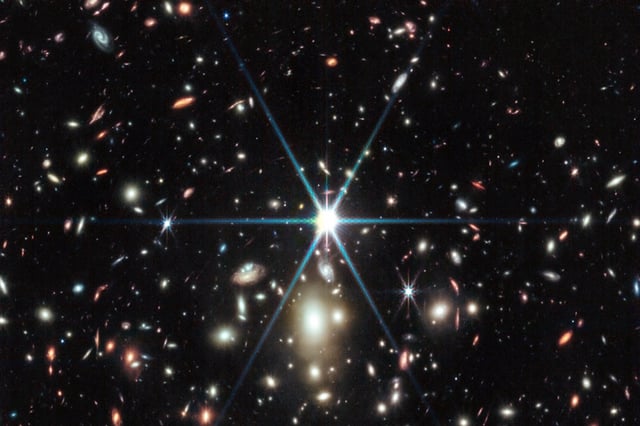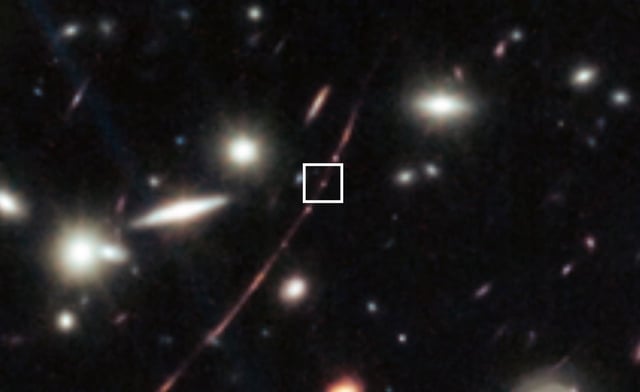Overview
- A peer-reviewed paper by Massimo Pascale and colleagues, published July 31 in The Astrophysical Journal Letters, reanalyzes JWST/NIRSpec spectra and lensing models and finds Earendel’s properties consistent with metal-poor globular-cluster progenitors and with a known cluster, 1b, in the same galaxy.
- Hubble first detected Earendel in 2022 in the Sunrise Arc galaxy, viewing light emitted about 900 million years after the Big Bang thanks to strong magnification from the foreground cluster WHL0137-08.
- Extreme lensing—reported at roughly a 4,000-fold magnification—and possible small-scale dark matter structure can stretch and brighten the source, relaxing earlier size constraints and permitting a compact-cluster interpretation.
- Experts caution that at JWST/NIRSpec’s resolution, the spectra of a highly magnified single star and a tight cluster can appear similar, leaving the classification uncertain.
- Proposed next steps include monitoring for microlensing-induced brightness flickers and additional JWST observations to distinguish a lone star, a binary system, or a star cluster.


